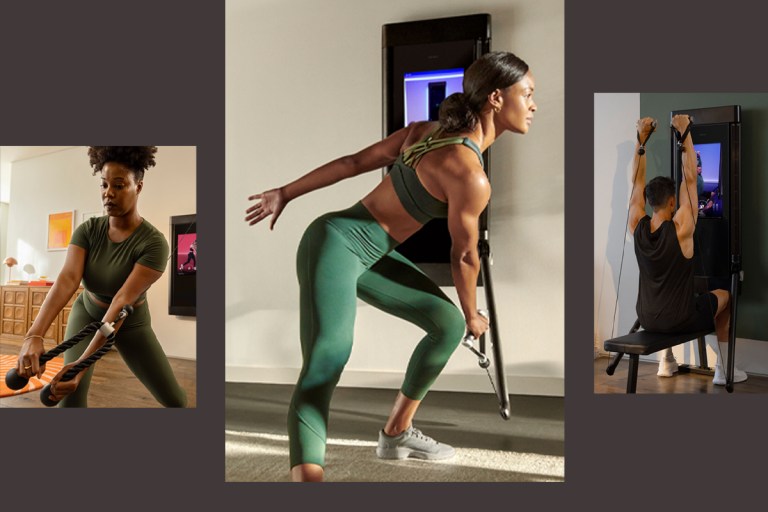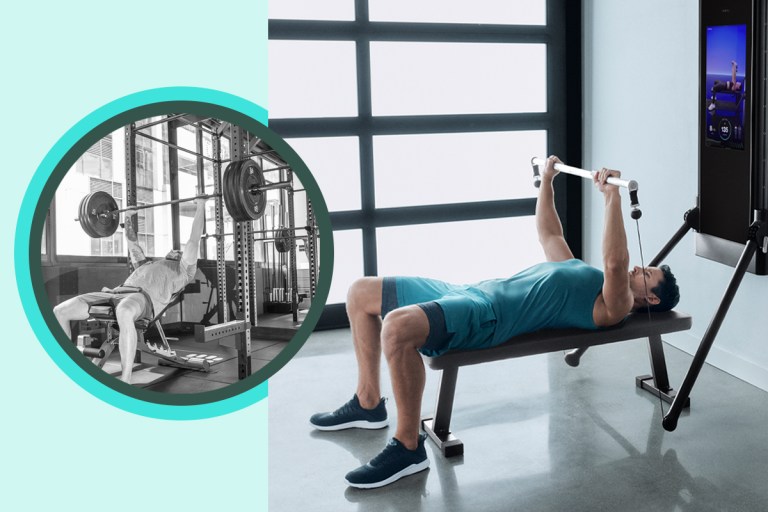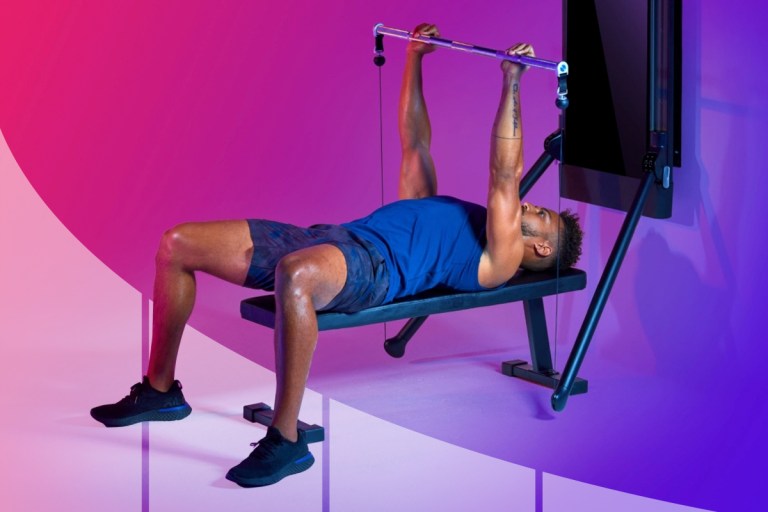What Are Benchmark Workouts and How Can They Support Your Fitness Journey?
Here’s how to use these repeat workouts to stay motivated and celebrate your progress.

When you work out consistently—gradually adding more resistance to your bench press or getting in more deadlift reps—you know you’re getting stronger, but it’s not always easy to see how those small steps add up to big changes.
That’s where benchmark workouts come in. A benchmark workout is any specific workout that you repeat at regular intervals to gauge your progress. Tonal coach and certified personal trainer Tanysha Renee says a benchmark workout is like a “3-D progress picture” that helps you measure your fitness gains. “It’s hard to see how far you’ve come in your fitness journey if you don’t take those snapshots,” she says.
If you tend to get hung up on aesthetic results or the number on the scale, a benchmark workout can give you concrete proof that your hard work is paying off and you’re getting closer to reaching your goals.
“When you use a benchmark workout, it’s going to show you exactly how much progress you’ve made,” says Jenna Moore, a certified strength and conditioning coach and Programming Specialist at Tonal. “Even if you don’t physically see that progress looking back at yourself in the mirror, you’re going to see it in the numbers and in the data.”
What is a Benchmark Workout?
Any workout can function as a benchmark, but it’s best to choose one that includes the type of training in which you’re hoping to progress. “A benchmark should consist of whatever exercises and training stimulus that are in line with your goals,” says Moore.
For assessing strength gains, Moore recommends including foundational lifts such as the squat, deadlift, bent-over row, and bench press. Since these compound exercises also mirror movements you do in everyday life, Renee agrees that they’re especially important to track in your benchmark workouts. “If your goal is to get stronger, then you’re going to want to look at your estimated one-rep max [for a specific exercise],” says Moore.
If you’re focusing on work capacity or muscular endurance, try duration-based workouts in which you can gradually increase the number of reps you complete in the given time. “Looking at total volume achieved in the same workout is a great way to see if you did more work in the same amount of time,” says Moore.
Interval or HIIT circuit workouts can serve as benchmarks if your goal is to improve cardiovascular conditioning. During those workouts, pay attention to your heart rate—over time, your heart rate should be lower as you give the same effort.
Whenever you do your benchmark workout, it’s essential to track all your stats including the number of reps and sets you complete for each exercise, the weight you use for each rep, and the total workout time. On Tonal, all these metrics are captured automatically and, when you repeat a workout, you’ll be able to see how your performance improved.
Besides tracking the numbers you achieve in your workout, Renee adds that benchmark sessions can be helpful in assessing improvements in your form and range of motion. Each time you complete your benchmark workout, take time to notice if you’re able to get lower into your squats or deeper into your hips or ankles. On Tonal, use Smart View to play back video footage of your workout and check if you’re receiving fewer form corrections over time.
How Often Should You Do Benchmark Workouts?
It’s important to repeat your benchmark workout frequently enough to stay motivated but not too often that you don’t have time to make progress in between. “When checking a benchmark, you should give your body time to actually change and adapt,” says Renee. Moore and Renee agree that the sweet spot is around four to six weeks. Any more frequently and you might not see any changes or your results might be skewed by daily fluctuations like one bad night’s sleep that throws off your performance.
“Four to six weeks is not always enough time to see physical or aesthetic results but you can see a lot of physiological results within that window,” says Moore. “Benchmarks are a great way to demonstrate those physiological adaptations and remind you of how amazing, strong, and capable your body is, even if you’re not seeing results in other areas.”
If you’re frustrated with not seeing physical changes quickly enough or feeling as if you’re hitting a plateau, a benchmark workout may give you the encouragement you need to keep putting in the work. The numbers don’t lie—you might be pleasantly surprised by how much stronger you are now compared to when you started.
Tonal Programs with Benchmark Workouts
Instead of designing your own benchmark workout, try one of these Tonal programs that include sessions designed to test your fitness. During these programs, you’ll work on the specific skills you’ll need to crush the final benchmark.

High Energy HIIT – Coach Ackeem Emmons
The first and last workouts of this high-intensity program feature the same circuit of five moves so you can see how far you’ve come. You’ll repeat these compound moves in duration-based sets with a 2:1 work-to-rest ratio that’ll test your work capacity. The four weeks of challenging, bootcamp-style workouts in between will set you up for success.

Four-Week Fast Track with Trace – Coach Trace Gotsis
This four-week program is bookended with identical benchmark workouts that include a mix of compound lifts and plyometrics. Compare your total volume and your one-rep max for each exercise to discover how much strength and endurance you’ve gained over the course of the program.

20-in-20: Lift and Shift – Coach Tanysha Renee
Although this program doesn’t include designated benchmark workouts, Renee says you can use the repetition of heavy lifts to track your progress week-over-week. Alternatively, she suggests repeating the entire program and measuring how much more you’re able to lift the second time around.


